Dear All,
The Supreme Court notice may stir the police and other authorities into action. It should. Or else, the children, who are country's biggest treasure, will continue to lose their childhood for the lust of a few who run these human trafficking rackets.
Just a heart rendering statistics to rake up the readers of this blog —seven children, mostly from extremely poor families, go missing every hour with a count of 165 a day.
The Supreme Court this week issued notices to the government on a petition filed by NGO Bachpan Bachao Andolan on the callousness of the police in tracking missing children.
What should disturb every person is that majority of 60,000 children who went missing in just 2009 were girl children. One can imagine where they landed — in brothels or in flesh trade markets. They are there at the age when most young girls think about their prospective careers or a life after marriage
In 1973, when the National Crime Records Bureau first published nationwide statistics on rape, 44.28% of perpetrators — almost half — were being convicted by trial courts. In spite of years of hard-fought struggles by women's rights groups, and landmark Supreme Court judgments, the conviction rate has fallen to 26.5% — just about a quarter. The decade-on-decade conviction rate has been in free fall: to 36.83% in 1983, 30.30% in 1993 and 26.12% in 2003.
Maharashtra reported a 13.9% conviction rate in 2010, while Andhra Pradesh and West Bengal both recorded 13.7%. Karnataka stood at 15.4%. Jammu and Kashmir had the lowest conviction rate nationwide: a disgraceful 2.6%.
Where we are failing to plug the loopholes in laws?
Why we see no strong commitment from State machinery&social masses to stop it?
Don't we need effective Police reform?
regards
Soheb Lokhandwala
Falak was just two years old&she died because we didn't care enough, and we didn't care in time. She symbolises many. Let us plug every hole in our safety nets for women in distress and for victims of child abuse, so that her death does not go in vain.A child died and we collectively mourn. She was just two years old. And she fought bravely, but the tubes and wires connecting her to life support in the AIIMS Trauma Centre were no match for the systemic failures that carried this baby to her death. For the truth is that Falak never really stood a chance.What we know of Falak's life are odd fragments from media reports. A 15-year-old girl brings an unnamed baby to a hospital. The baby has human bite marks on her body, and has been beaten, almost to death. It turns out the teenager is not the mother, and has herself been abused by a partner who dumped the baby on her just months ago. Some days later, the real mother is found — 22-year-old Munni, trafficked across many State borders, from Bihar to Delhi and sold into a second marriage in Jhunjhunu, Rajasthan, forced to leave her three children to the mercy of strangers who promise to look after them but never do. Names of several men pop up along the way — Shah Hussain from Bihar, Munni's husband, who sold her; Sandeep Pandey, husband of the teenager's friend Pooja, who raped her, then tried to sell her in marriage to an old man in Etah in Uttar Pradesh, and then passed her on to a taxi driver Rajkumar; Rajkumar, the teenager's current partner and pimp; Jitender Gupta, the teenager's father who beat her so badly that she ran away into the arms of these pimps. There are other odd fragments — a man named Manoj and his wife Pratima, arrested from Patna — they are the ones who eventually handed the baby to Rajkumar and to the 15-year-old, leading finally to Falak's death.Confusing human dotsHow do these confusing human dots really join? There is much we might never know. All we really know is that the desperate, violent lives of Munni and a 15-year-old girl unknowingly crossed, and a little baby girl went from the arms of a helpless, trafficked mother into the care of a raped, abused, and disturbed teenager.These tiny fragments are like a million shards of broken glass, which when pieced together create a hideous distorted mirror. A mirror to what we are — a nation with no state or social safety nets for the most desperate. Falak, Munni and the unnamed teenage girl were in free fall through every crack in our system. Their lives tell a thousand stories.Girls in India are often born unwanted, if they are born at all. The decline in the child sex ratio (0-6 years), from 945 in 1991 to 927 in 2001 and further to 914 females per 1,000 males in 2011 — is the lowest since independence. Falak was probably among those unwanted, devalued girls, easily dispensed with. And had she lived, she may have been among the malnourished millions, among the 42.3 per cent of under-fives in India who are underweight or the 58.8 per cent who are stunted (The HUNGaMA report, Naandi Foundation, 2012). As a girl, she was at the lowest end of this malnourishment ladder. Perhaps if she were stronger she would have survived the abuse.And what of the young 15-year-old teenager who first battered and then tried to save Falak? A run-away from the slums of Sangam Vihar, right in the heart of the capital. Her mother died and her father abused her, and so she ran for security to her would-be pimps. They prostituted and raped her, again and again. And yet this frightened young girl did not reach out to any system for help.Should she have gone to the police? Could she have? Rape, it seems now, is such an everyday occurrence, and justice so elusive, it may have made little sense. For where would she go from the police station after lodging her FIR, with no family backing, no one to take her in? Where does she stay, how does she live as she fights a rape case? No support before, during or after. We offered her nothing but rape laws and a gender blind criminal justice system. Although the NCRB claims a conviction rate of 26.5 per cent in 2010, (marginally up from 26.12 in 2003), these figures are hugely misleading. According to legal activists, given the number of convictions overturned in appeals, a better approximation would be a 5 per cent rate of conviction in rape cases. So did this underage, runaway girl from a slum stand any chance of help through the courts? The rules of evidence, the procedural hurdles, a hostile police, the lack of community and public support to a rape survivor, and the enormous social stigma — these are the odds she would have been up against. What she did have was a damn good chance of being called a liar or a disobedient slut and being sent right back home. The truth is that we failed to give this young disturbed abandoned girl a choice more "real" than the one she sought in a violent abusive relationship. Today she probably needs psychiatric care more than the bars of a prison cell, but even that it seems is not on offer.Falak's mother Munni was apparently sold and trafficked across two State borders from Bihar to Delhi to Rajasthan. Year 2010 saw 3,422 incidents of crime related to human trafficking reported compared to 2,848 in 2009, an increase of 20.2 per cent (NCRB, 2010). Clearly our men in uniform didn't manage to see or stop these traffickers. And this year they will add Munni to their statistic. But will we do anything to offer her a better life? Where are the "rehabilitation" programmes for women like Munni? As Munni went from a husband who sold her, to a pimp who re-sold her, did she have anyone to turn to? Look at the condition of the Nari Niketan shelter homes we have in India for women in distress, where abuse is the norm rather than the exception. Central schemes consist only of Swadhar and badly run short-stay homes.Not an aberrationThe tragedy is that neither the abused teenager nor Munni is an aberration. According to NFHS III (2007), one in three Indian women aged 15-49 years has experienced physical violence; and one in 10 has experienced sexual violence. Nearly two in five married women have experienced physical or sexual violence by their husband. Sixteen per cent of never married women have experienced physical violence since they were 15 years of age by a parent, sibling or teacher. One in four abused women have never sought help to end the violence. Two out of three abused women have not only never sought help, but have also never told anyone about the violence. Abused women most often seek help from their families. Very few abused women seek help from institutional sources. (Quoted in Psychosocial Care for Women in Shelter Homes, UNODC & NIMHANS, 2011)And as for Baby Falak — child abuse remains among the most rampant and hidden forms of everyday violence in Indian homes. Systematic data, information and services on child protection are still not easily available. The National Commission for Protection of Child Rights set up in March 2007 is a beginning. But there's a long way to go. In the meantime, a child has died a horrible death. She was just two years old. And she died because we didn't care enough, and we didn't care in time. She symbolises many. Let us plug every hole in our safety nets for women in distress and for victims of child abuse, so that her death does not go in vain.( Farah Naqv- The author is a writer & activist, and a member of the National Advisory Council)



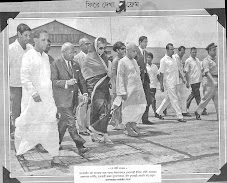



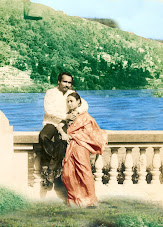






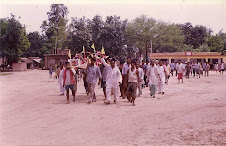

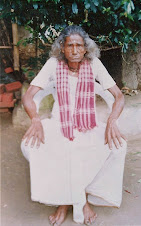
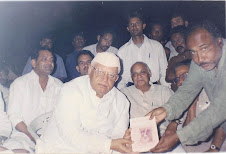
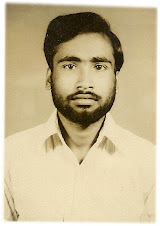



No comments:
Post a Comment